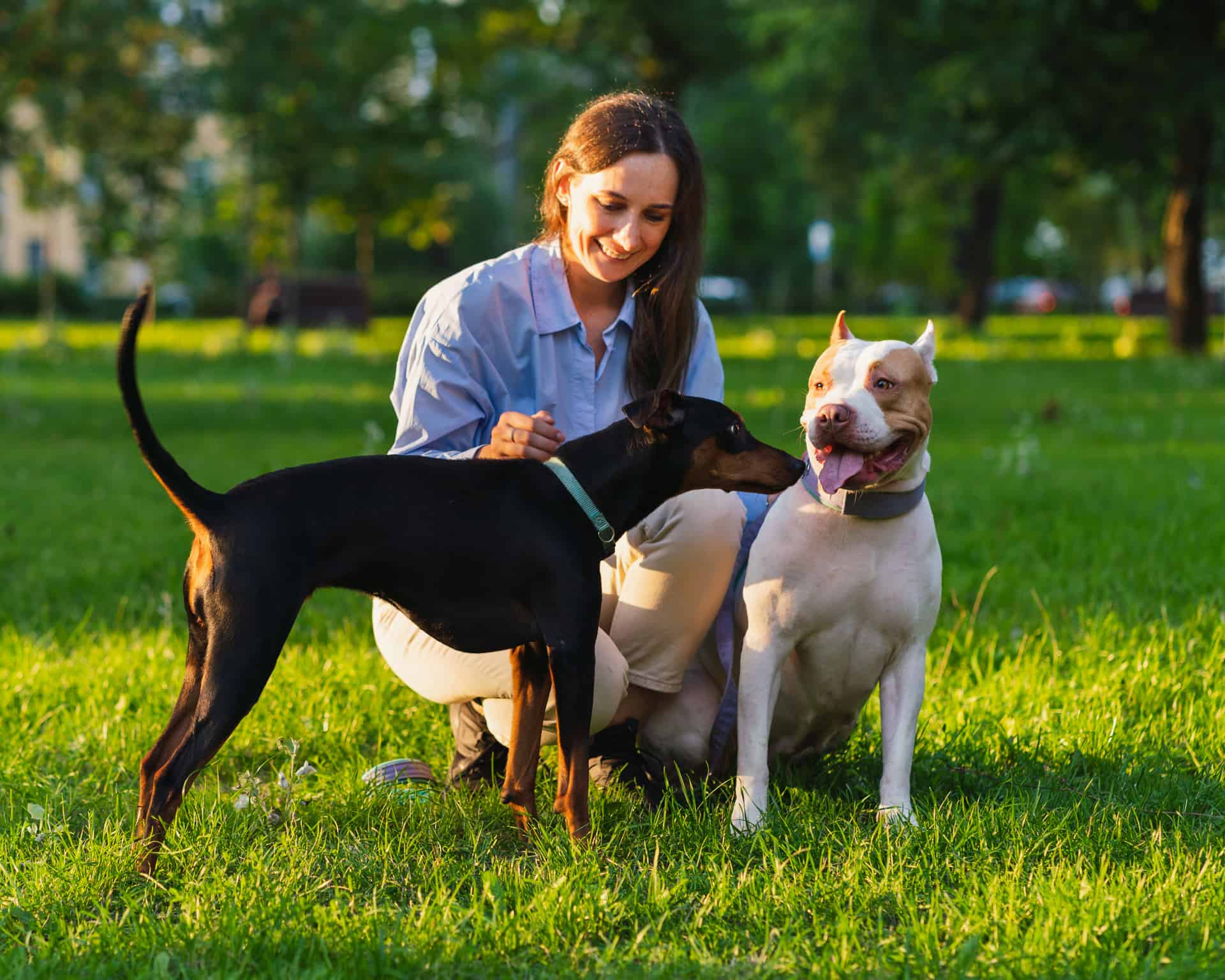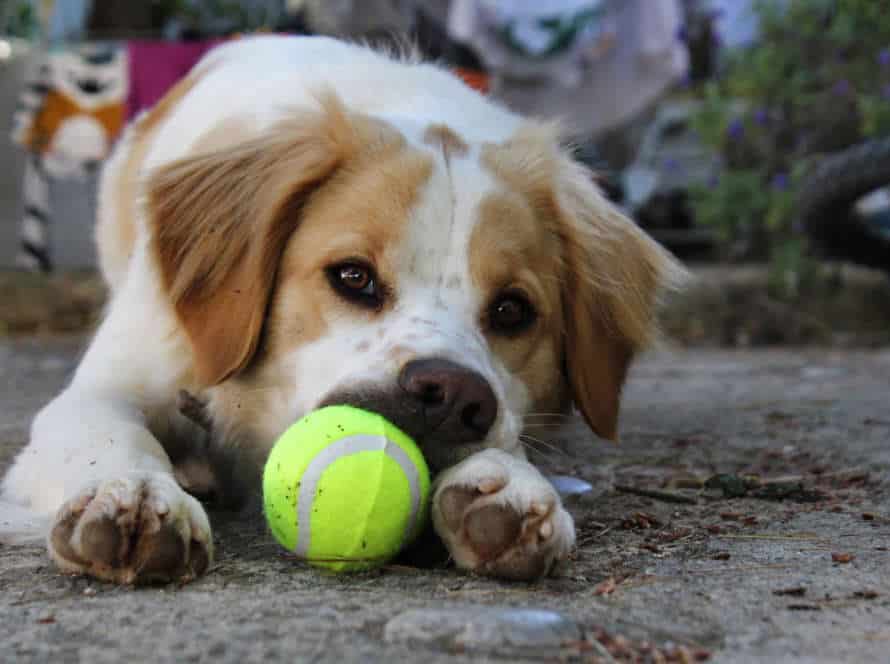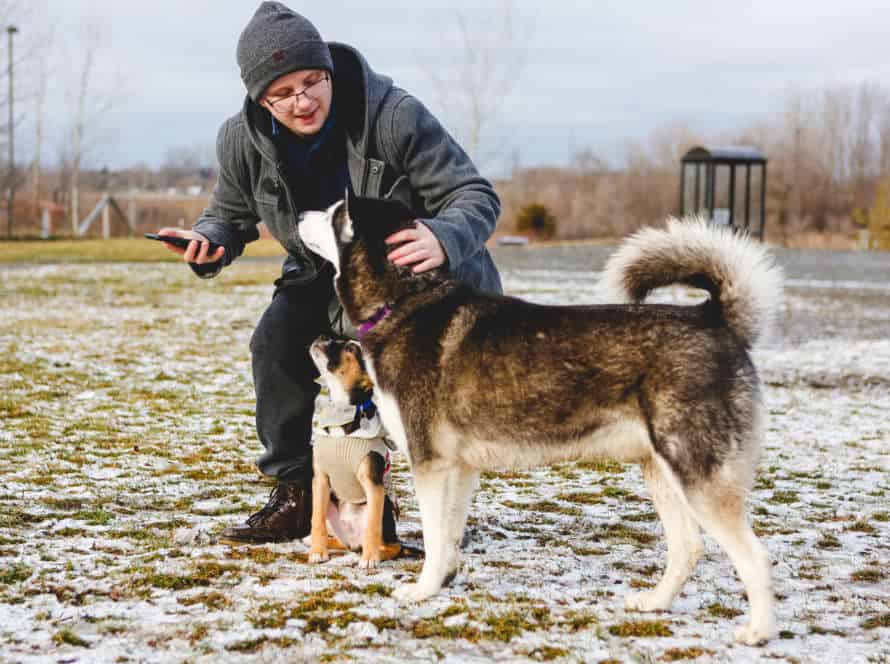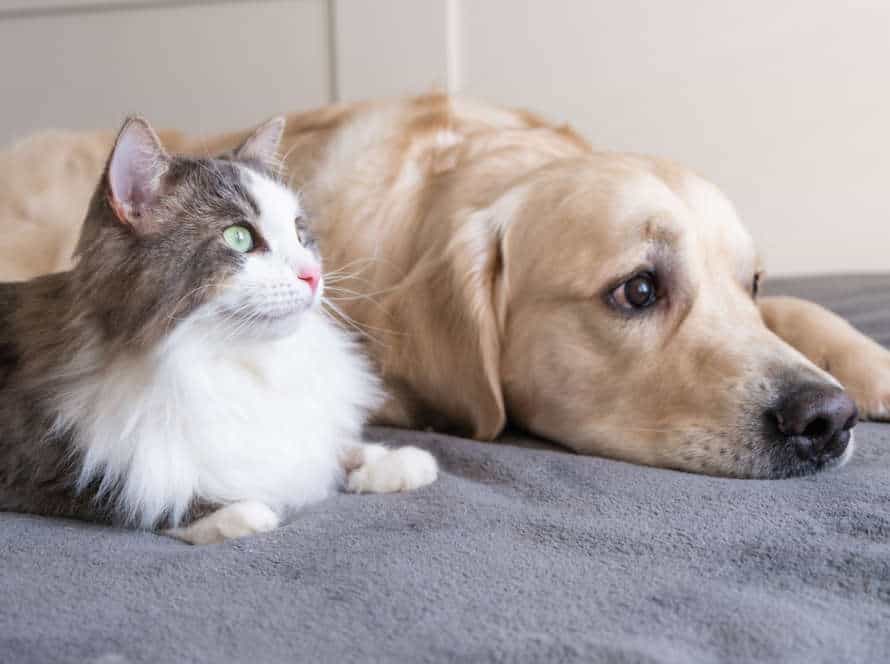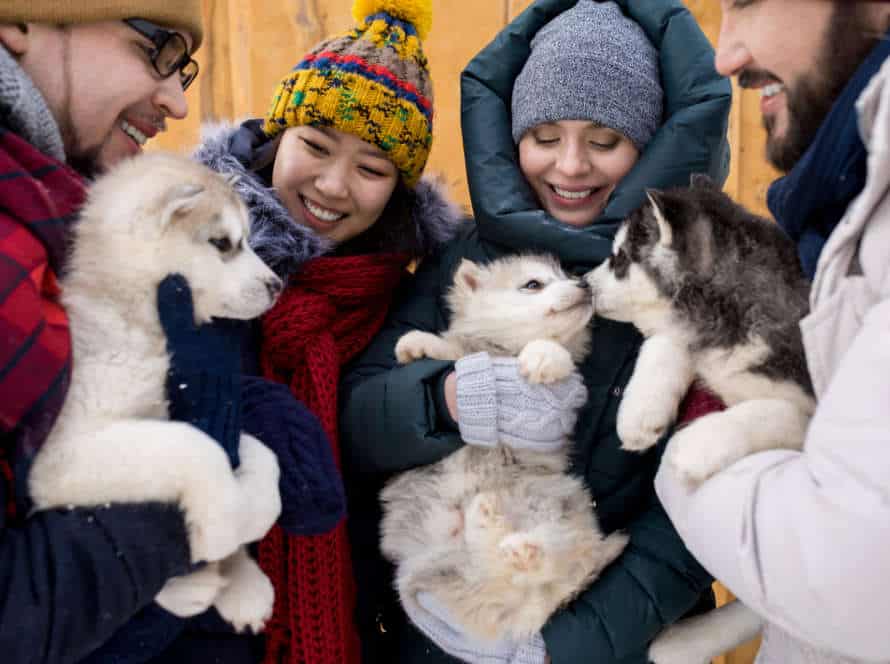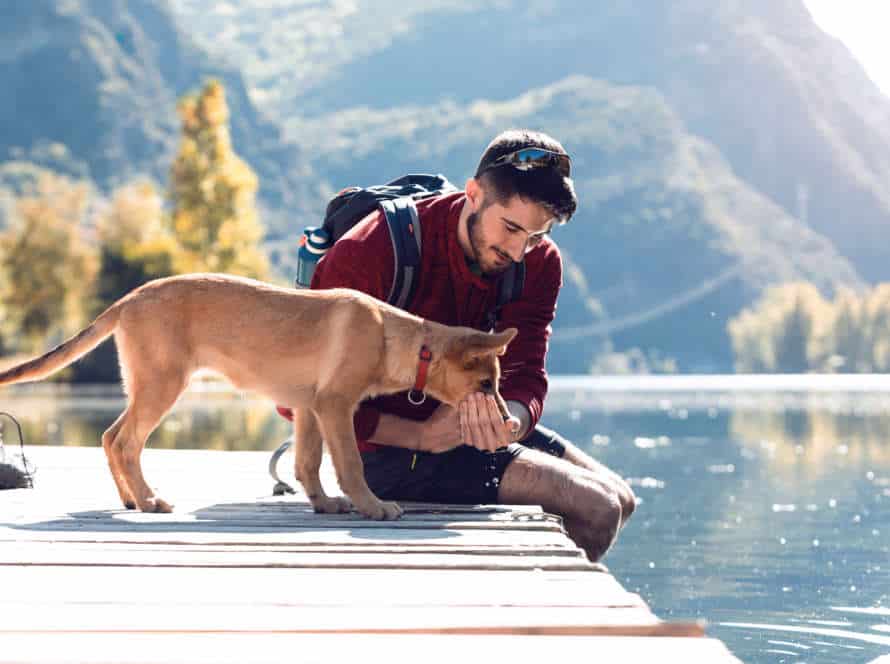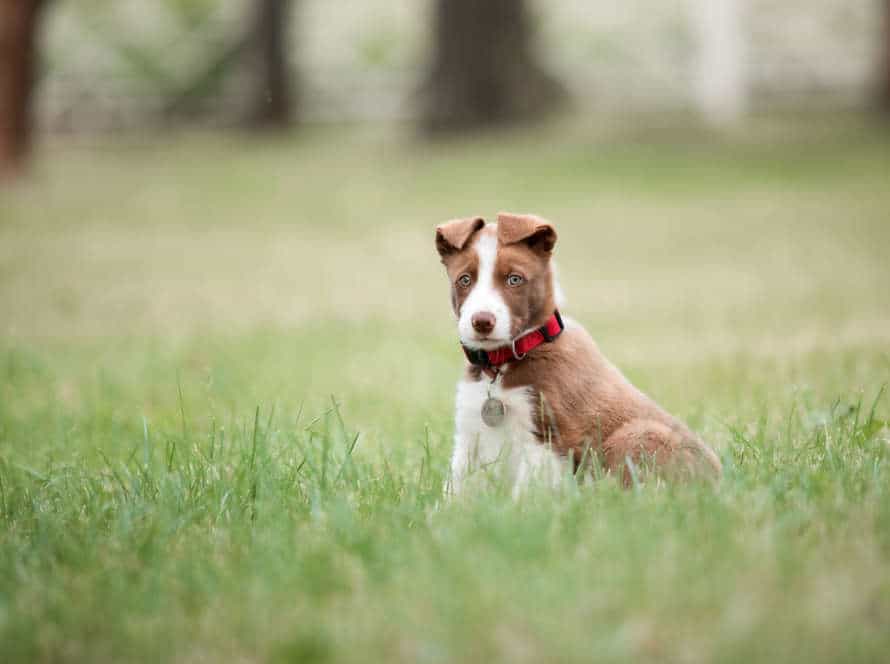Introducing Your Dog to New Animals: A Step-by-Step Guide
Introducing your pup to new critters can be tough. But, with the correct technique, time and effort, it can be done! Here’s a step-by-step guide:
- Figure out your pup’s personality and behavior around other animals.
- Pick a neutral place for the introduction. Both animals should be on a leash or in separate enclosures.
- Let your pup smell and watch the other animal from a secure distance.
- Gradually move the two animals closer together. Monitor their behavior.
- Praise positive reactions and redirect any negative reactions.
- Repeat this process over a few sessions until your pup is at ease and friendly with the new creature.
Remember, each pup is different. Introductions may take longer and require a different approach. With patience, dedication, and positive reinforcement, your pup can learn to live with new animals.
Outline-
Introducing your pup to new critters can be intimidating, yet it’s fundamental for their social progress and overall well-being. Here’s a step-by-step guide to assist you:
- Begin with a neutral spot.
- Keep your pup on a leash and remain cool and in control.
- Observe body language and actions from both animals.
- Praise and treat positive behavior.
- Stop the meeting before any signs of aggression or fear appear.
- Gradually expand the length and frequency of the interactions over time.
Be patient and go at your pup’s pace. With constancy and good reinforcement, your pup can learn to appreciate the company of new animals.
Understanding Dog Socialization
Socialization is a must for every pup. Introducing them to new animals is an important part of this. Knowing the basics of dog socialization can help you be ready. In this article, we will go over the different parts of dog socialization. Plus, we’ll give a step-by-step guide on how to introduce your pup to new animals.
What is dog socialization?
Dog socialization is all about teaching your dog to feel comfy and safe no matter what setting or who they are around. It helps them to have better social skills, more self-confidence, and learn how to communicate better.
To get your pup comfy with other animals, follow these steps:
- Choose a spot that neither one of them has been to.
- Put your pup on a leash.
- Let them look and sniff each other in a chill way.
- Give treats and praises when they do something good.
- If needed, put them in different spaces and try the introduction again later.
Socialization is an ongoing process that needs patience, consistency, and positive reinforcement. Do it right and you’ll give your pup the chance to be a happy, well-rounded part of the family.
Why is it important?
It’s essential to socialize your pup from an early age. This helps with their health, well-being, and happiness. It helps them form strong bonds with other doggos and animals. Also, it teaches them how to behave in new situations.
A well-socialized pup is less likely to have aggression or anxiety issues. They will live a longer, healthier life. Plus, it stops bad behaviors like biting, chewing, barking and destructive habits.
Socializing your pup also helps them understand commands, tricks and etiquette when around people and other animals. So, keep exposing them to new environments, animals and people all through their life.
When should you start socializing your dog?
Socializing your pup at a young age is essential for their health and behaviour. Between 3-14 weeks, puppies should start socializing.
Gradually introduce your dog to new people, animals, and experiences. Monitor their responses and reward them with treats when they do well.
When introducing your dog to other animals, here’s what to do:
- Have the meeting in a neutral spot with a neutral person.
- Keep both dogs on a leash until they are comfortable.
- See if there are any signs of aggression or unease.
- Reward good behaviour from both with treats and praise.
Socializing your pup is a gradual process. Each pup needs different amounts of time to get used to new things. By socializing early, you’ll give them the tools to be a happy, confident companion.
Preparing for Introductions
Intimidating it may be, but introducing your pup to other animals need not be! Prep is the key – before they meet, there are steps you must take. To create a safe and comfy atmosphere, just follow these tips – success is nearly guaranteed!
Vaccinations and health checks
It’s key to vaccinate and do health checks on your dog before introducing them to other animals. This will protect everyone! Here are some you should consider:
- Rabies, distemper and parvovirus vaccinations must be up-to-date.
- Have a vet check your pup to see if they’re in top shape.
- Use flea and tick prevention treatments.
By doing these simple steps, you can make sure your dog is fit and ready for new animal meetings.
Training and obedience
Obedience and training are vital for a well-behaved pooch.
Before introducing your pup to fresh critters, it’s important to prepare them. Here’s a guide for introducing your dog to new animals:
- Step 1: Start with scent – let your doggy sniff the new animal’s aroma from a distance.
- Step 2: Governed meeting – Present the animals while kept apart by a gate or fencing.
- Step 3: Leashed introduction – Enable the animals to meet on a leash while watched closely.
- Step 4: Off-leash introduction – Allow off-leash interaction only once the animals are content with each other.
Pro tip: Continuously monitor the interaction between animals for safety. Never force a meeting if an animal appears fearful or aggressive.
Equipment and tools
You should have the right stuff when introducing your pup to other animals. Here’s what you’ll need:
- Leash and collar or harness–to keep Fido in control and stop him from running off.
- Muzzle–for doggies that show aggressive behavior.
- Treats–to reward excellent behavior and shift your dog’s attention.
- Clicker–to mark and give a reward for good behavior.
- Water–keep your doggy hydrated during the introduction.
- Poop bags–for cleaning up after your pup.
Be ready! Having the correct equipment is essential for a successful introduction. Have all the necessities on hand and be able to adjust to your pup’s behavior during the interaction.
Slow Introduction
Introduce your pup to a new animal slowly! This way, you’re providing a safe and comfortable environment for them to get to know each other. Instead of all at once, it’s better to do it gradually. This method helps create a positive first impression for your dog and helps them become comfortable with the new animal.
Meeting on a leash
Introducing your pup to new critters on a leash? Here’s a guide to help it go smoothly.
- Pick the right spot: Get somewhere neutral, like a park or open area.
- Keep distance first: Start far apart, then gradually get closer.
- Reward good behaviour: Praise your pup for staying calm or showing curiosity but not aggression.
- No punishment: Don’t scold or do anything harsh, as it could make them have bad feelings about the other creature.
- Increase interaction slowly: Let them sniff or even play together, but under supervision.
- Leashes on: Keep them on at first, then off-leash in a safe and enclosed area when they’re familiar.
Pro Tip: Be patient. Give your pup time to adjust without rushing. It’ll reduce stress for both animals.
Positive reinforcement
Positive reinforcement is a good way to make your pup meet new animals without any stress. It teaches your dog to have great experiences when meeting new animals, not fear or aggression. Here are the steps:
- Start with a leash. Put your dog and the new animal at a distance.
- Give treats, praise, and love for good behavior, for example, calmness and curiosity.
- Decrease the gap between your pup and the new animal in multiple sessions, keep rewarding the positive behavior.
- End each session with lots of praise and a special treat.
- Repeat until your pup is relaxed around the new animal. Supervise their meet-up to ensure safety.
Pro tip: Have patience. Don’t rush. Keep the sessions short and nice. Let your pup get used to the new animal slowly.
Short and supervised interactions
Sluggish initiation is vital when introducing your pup to new critters, specially when they have not encountered other animals previously. Supervised, short interactions are essential for the slow introduction process to guarantee the safety and well-being of all creatures.
Here are some tips to keep in mind:
- Create a tranquil, low-stress atmosphere.
- Utilize positive reinforcement methods to reward acceptable behavior.
- Keep the interactions brief, starting with a few minutes.
- Supervise the interactions attentively and be ready to separate the animals if needed.
- Raise the length and frequency of interactions slowly over time.
- Remember that each animal is exclusive, and the introduction process may require more time for some. With patience and determination, you can assist your pup to build up positive social skills and enjoy the company of new animals.
Gradual Progression
Introducing your pup to new animals? Take it slow! Building familiarity is key. Experts suggest progressing gradually. Start by introducing your pup from a distance, in a safe environment. Then, over time, increase their exposure. Safety first!
Off-leash interactions
It’s important to gradually introduce your dog to new animals. Here’s a guide:
- Keep both animals on a leash when you first introduce them.
- Let them sniff each other while still on their leashes.
- If your pup is calm and friendly, let them off-leash in an enclosed area.
- Watch them closely, and be ready to intervene if needed.
- Slowly increase the time and number of animals your pup interacts with.
Pro Tip: Reward your dog for good behaviour during the introduction process. Doing so will create positive associations with new animals.
Multiple animal interactions
Gradual progression is essential for introducing your pup to new creatures. Follow these steps for a successful introduction:
- Start by letting your dog sniff the other animal’s scent, using their blankets or toys.
- Have a meeting in a neutral spot, like a park or a friend’s yard.
- Keep both animals on leashes and watch their behavior. If relaxed and curious, increase their time together. If aggressive or uncomfortable, separate and try again.
- Gradually reduce the leash as interactions go well.
- Reward good behavior, and be patient – it could take minutes to weeks!
Pro tip: Positive reinforcement, attention, and training will help your dog interact with other animals nicely.
Identifying signs of stress
Identifying signs of stress in your pup is essential when bringing them together with other animals. Taking it slowly is the key to success. Knowing your dog’s body language can help detect signs of stress early on.
Here are some common signs:
- Panting or drooling too much
- Tremors or shaking
- Quick heart rate or breathing
- Low body posture
- Dilated pupils or averting eye contact
- Excessive yawning or lip-licking
If you observe any of these, it’s important to slow down the process and give your canine time to adjust. Gradual progression, along with positive reinforcement training, can help your dog feel more secure and confident when meeting other animals.
Pro tip: Always look after your dog when introducing them to new pets, and never leave them unattended.
Handling Challenges
Introducing your pup to creatures like cats, rabbits and wild birds can be tricky. Ensure your dog is adequately socialized and feels comfortable in novel settings. This guide will provide you with helpful steps to follow when introducing your pup to different animals. Let’s go!
Aggression and fear
Aggression and fear can be difficult for dogs to deal with when meeting new animals. But, with proper prep and training, you can help your pup get through these challenges. Here are some ideas:
- Begin by introducing your dog to animals similar in size and demeanor.
- Utilize a leash or a fence to keep the animals safe while they meet.
- Offer treats and kind words if they show positive behavior.
- Look out for any signs of aggression or fear and take a break if needed.
- As your pup becomes more comfortable, gradually increase the interactions’ duration and frequency.
Every dog is unique, and it may take some time for your pup to feel relaxed around new animals. With persistence and patience, your dog can learn to make new friends without any issues.
Disinterest and lack of engagement
Introducing your pup to new animals can be tricky. Here’s how to approach it:
- Begin with a controlled introduction in a neutral place. Make your pup stay calm and attentive.
- Reward your pup with treats and praise when they interact with the new animal.
- Slowly increase the duration and frequency of the interactions. Each time, reward them for engaging.
- Be sure to always supervise your dog when they meet new animals. Don’t push them if they seem uneasy.
With patience, your pup will learn how to interact with new animals in a positive way.
Seeking professional help
Introducing your pup to new animals can be hard. But, professional advice can help make it easier and safer. Here are some reasons why it’s a smart idea:
- Safety: When meeting new animals, there can be risk. Especially, if your dog has a history of aggression or fear. A pro can evaluate the situation and suggest the safest way to go.
- Experience: A professional knows how to work with dogs. They can offer advice and build a training plan that fits your pup’s temperament, learning style, and needs.
- Resources: A pro has access to tools and networks which can help when meeting new animals.
Pro tip: Research any pro you choose. Look for certifications, reviews, and referrals. Pick someone with experience in your pup’s breed or size.
Consistency and Patience
Consistency and patience are key for introducing your pup to new critters. Make sure your approach is always the same. Take it slow. This will help them both get used to each other and build a rapport. Patience is essential – it may take some time, but it’ll be worth it in the end.
Consistent socialization plan
Socializing consistently is the key to introducing your pup to new creatures. Here’s how to make a plan that works:
- Begin by exposing your dog to one animal at a time.
- Increase the number of animals and the level of their interaction gradually.
- Keep the meetings short, and supervise.
- Use positive reinforcement to reward good behavior.
- Choose animals that are peaceful and not frightening.
- Be patient and take breaks. Each dog is unique, and may need different levels of socialization.
- Celebrate progress, but don’t rush. Let your dog build self-confidence at their rate.
Rewards and reinforcement
Rewards and reinforcement are essential when introducing your pup to new animals. Consistency and patience are must-haves. Here’s a few tips:
- Positive reinforcement, like praising and treats, works well.
- Be consistent with your commands and the environment.
- Start off in a neutral place, such as a park or a friend’s backyard.
- Gradually increase the exposure.
- Barriers or leashes can help keep them apart.
- Reduce the distance as they get more comfortable.
- Patience is key. Let your dog set the pace.
- With time and consistency, your dog can learn to socialize with new animals.
- Pro tip: Get help from a pro dog trainer for guidance and support.
Being patient with your dog’s individual pace
Introducing your pup to new critters can be tough. It’s key to be patient and understand each dog is unique. Here are some tips:
- Begin in neutral territory.
- Utilize positive reinforcement.
- Make tiny steps.
- Look for signs of worry and back off if needed.
By obeying these guidelines and being considerate to your pooch’s pace, you can create a positive and calm atmosphere. This will let your dog gradually gain confidence around other animals.
Frequently Asked Questions
1. Q: How do I prepare my dog for meeting new animals?
A: First, make sure your dog is up-to-date on vaccinations and parasite prevention. Practice basic training commands with your dog to ensure they will listen to you and are under control. Consider your dog’s temperament and energy level, and choose animals to introduce them to accordingly.
2. Q: Should I socialize my dog with other animals?
A: Yes, socializing your dog is important for their overall well-being and behavior. Exposing them to new animals can also help prevent fear and aggression towards unfamiliar animals.
3. Q: How do I introduce my dog to new animals?
A: Start with a controlled and supervised introduction in a neutral territory. Allow the dogs to approach each other slowly and calmly. Reward good behavior and separate the dogs if any signs of aggression occur.
4. Q: What should I do if my dog is afraid of the new animal?
A: Take things slow and give your dog time to adjust. Don’t force interactions and reward positive behavior. Consider seeking professional help if your dog is consistently fearful or anxious around other animals.
5. Q: Can I introduce my dog to different types of animals?
A: Yes, but always make sure the animals are safe to be around each other and supervise the interaction closely. Start with individual introductions and progress to more complex groups as your dog becomes more comfortable.
6. Q: How can I prevent my dog from being aggressive towards other animals?
A: Proper socialization and training are key to preventing aggression. Provide positive reinforcement for good behavior and redirect your dog’s attention if they show signs of aggression. Seeking professional help may also be necessary to address aggression issues.

